Sur un fond de couleur rouge, avec ses épaisses broderies en fil d'or et ses nombreuses représentations, notre bannière néogothique de la première partie du XIXe, a conservé sa fraicheur.
Le motif principal est une grande représentation de deux anges et d'un ostensoir. En son centre, cet ostensoir portant hostie est soutenu par deux anges en prières. Une scène encadrée de la locution latine suivante "Ecce Panis Angelorum Factus Cibus Viatorum" que l’on pourrait traduire par « Ceci est le pain des anges qui s'est fait nourriture pour le voyageur."
Un riche décor floral habille cette bannière. Son pendant est agrémenté de deux blasons portant deux allégories du Christ, le premier avec l'image du Pélican et le second matérialisant l'Agneau de Dieu.
Elle est montée sur hampe transversale en bois recouverte de velours rouge.
Etat d’usage - Tissus fusés à plusieurs endroits – quelques manques – doublure tissu rosé.
Dimensions de 190 cm de hauteur sur 105 cm de large
On a red background, with its thick gold thread embroidery and its many representations, our neo-Gothic banner has retained its freshness. The main motif is a large representation of two angels and a monstrance. In its center, this monstrance carrying a host is supported by two praying angels. A scene framed by the following Latin phrase "Ecce Panis Angelorum Factus Cibus Viatorum" which could be translated as "This is the bread of the angels who became food for the traveler."
A rich floral decoration adorns this banner. Its counterpart is decorated with two coats of arms bearing two allegories of Christ, the first with the image of the Pelican and the second materializing the Lamb of God.
It is mounted on a transverse wooden pole covered with red velvet. Used condition - Fabrics frayed in several places - some missing parts - pink fabric lining.
Dimensions of 190 cm high by 105 cm wide
Vous devez être connecté pour publier un avis.

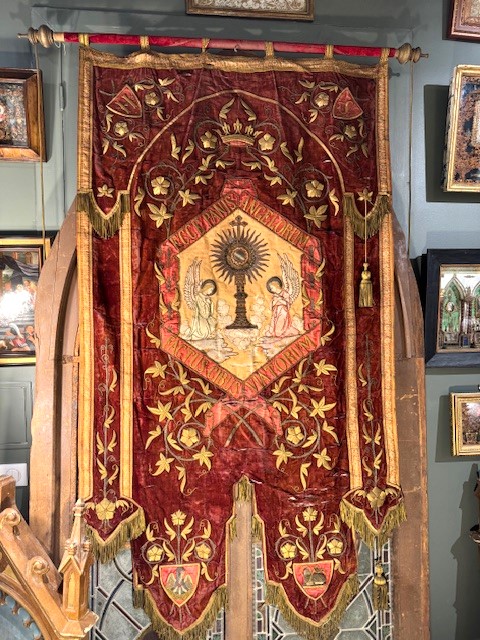
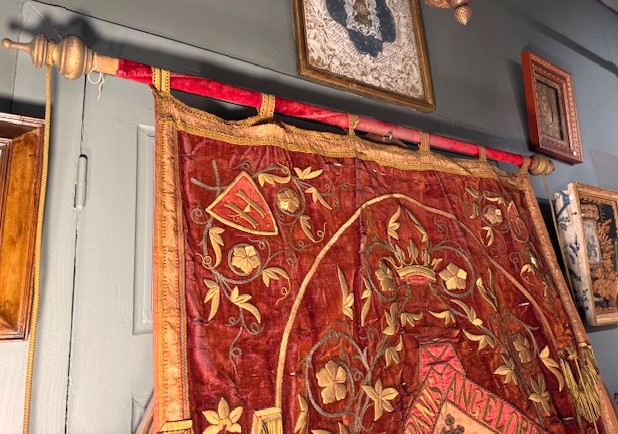
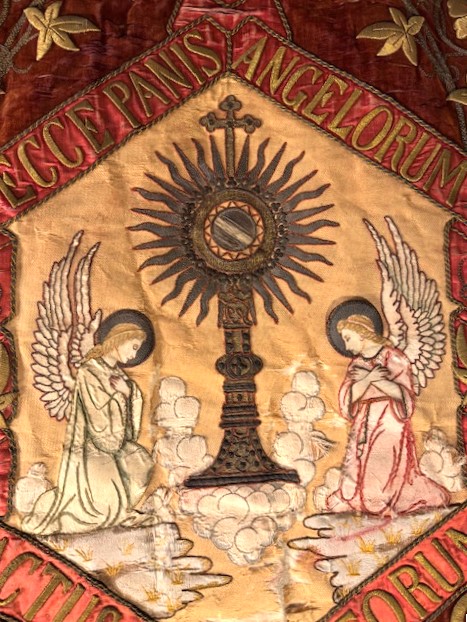
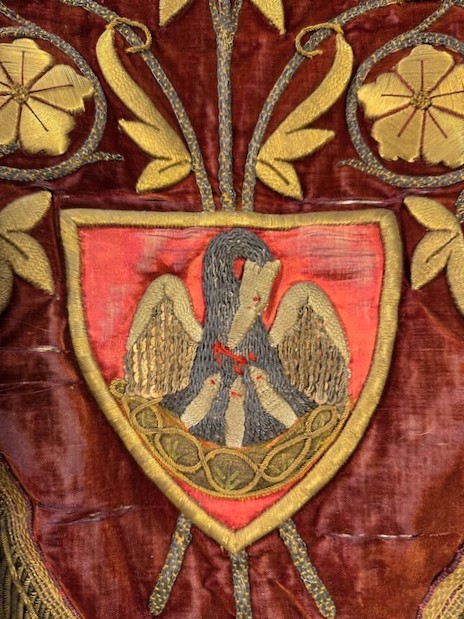
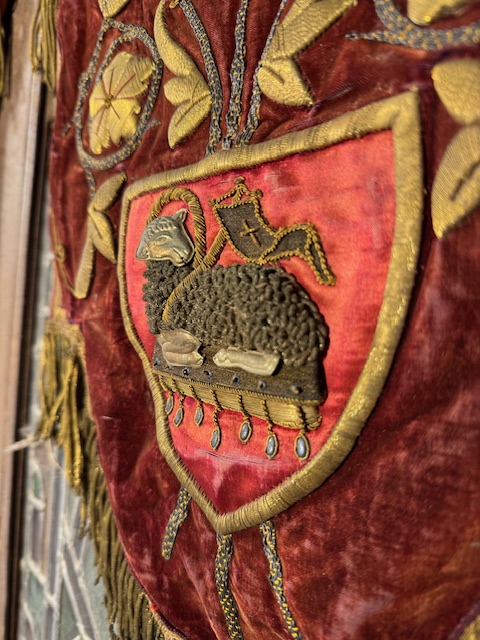
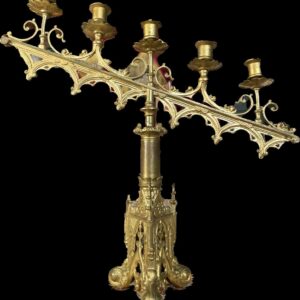

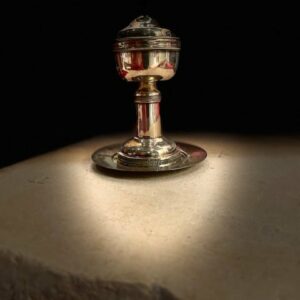
Avis
Il n’y a pas encore d’avis.